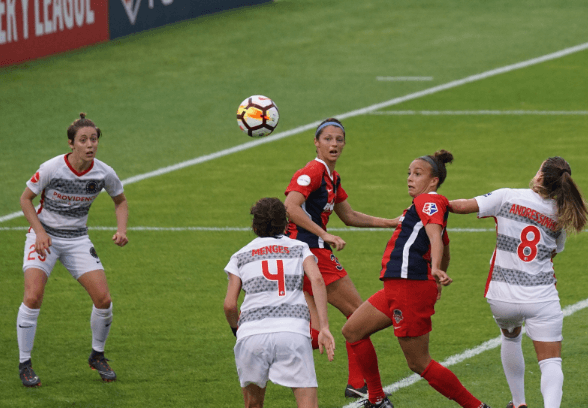The Growing Popularity of Women’s Cricket, Football, and Hockey: A New Era for Women’s Sports

The world of sports is undergoing a profound transformation, as women’s cricket, football, and hockey experience unprecedented growth in popularity and recognition. These sports, which have historically been dominated by men, are now embracing a broader audience, with female athletes stepping into the spotlight, achieving remarkable successes, and inspiring a new generation of fans. This surge in interest has been driven by increased media coverage, investment, and institutional support, as well as a shift in societal attitudes towards gender equality in sports.
In this article, we will explore the factors contributing to the rise of women’s cricket, football, and hockey, the impact this growth has had on the sports landscape, and what the future holds for women athletes in these fields.
1. Increased Media Coverage and Visibility
One of the key drivers behind the growing popularity of women’s sports is improved media coverage. Historically, women’s sports have received a fraction of the attention given to men’s games, with minimal airtime on television and lower priority in sports journalism. However, recent years have seen a shift, as broadcasting networks and streaming platforms recognize the potential of women’s sports to attract large audiences.
- Cricket: Events like the ICC Women’s T20 World Cup have seen record-breaking viewership. The 2020 final between Australia and India at the Melbourne Cricket Ground attracted over 86,000 spectators, making it one of the largest crowds for a women’s sporting event. This was complemented by millions more watching the game on television and online streaming platforms, highlighting the widespread interest in women’s cricket.
- Football (Soccer): The FIFA Women’s World Cup has been a major turning point for women’s football. The 2019 edition in France drew a global television audience of over 1 billion viewers, with the final between the USA and Netherlands setting viewership records. This visibility has significantly boosted the profile of female footballers and increased interest in domestic leagues such as the FA Women’s Super League (WSL) in England and the National Women’s Soccer League (NWSL) in the United States.
- Hockey: Women’s hockey has also benefited from increased media exposure, especially during major tournaments like the Hockey World Cup and Olympic Games. National teams, such as the Indian Women’s Hockey Team and Netherlands Women’s Team, have gained a substantial following, with their matches broadcasted on prominent sports channels, bringing the game to a wider audience.
See also: The Rise of Short-Format Tournaments in Cricket and Their Global Appeal
2. Investment and Professionalization of Women’s Leagues
The rise of women’s sports is also closely tied to increased investment from both the private sector and sports governing bodies. Investment has enabled the professionalization of women’s leagues, leading to better facilities, higher wages, and more opportunities for women athletes to pursue sports as a full-time career.
- Cricket: Cricket boards like the Board of Control for Cricket in India (BCCI), Cricket Australia (CA), and England and Wales Cricket Board (ECB) have invested in women’s T20 leagues and national contracts. The launch of the Women’s Premier League (WPL) in India in 2023 was a landmark event, offering female cricketers substantial contracts and a professional platform similar to the Indian Premier League (IPL) for men. This has drawn international talent and elevated the status of women’s cricket in India and beyond.
- Football: Major football clubs in Europe and the United States are increasingly investing in their women’s teams. Clubs like Chelsea, Barcelona, and Manchester City have developed strong women’s programs, with UEFA’s Women’s Champions League growing in prominence. These investments have led to better pay and working conditions for female players, making women’s football more sustainable as a career path.
- Hockey: Hockey federations, particularly in Europe and Asia, have focused on promoting women’s leagues and providing more exposure through international tournaments like the Pro League. This focus has given rise to professional leagues and more training facilities for women, allowing them to compete at a high level and attract new fans.
3. Changing Attitudes Towards Gender Equality in Sports
Societal attitudes towards gender equality and women’s rights have evolved, driving a broader acceptance of women’s participation in sports. This shift is reflected in initiatives aimed at closing the gender gap in pay, facilities, and opportunities within sports. Advocacy for equal pay and equal representation has played a critical role in elevating the status of women’s sports.
- Global Movements: The #EqualPlayEqualPay movement in women’s football, led by the US Women’s National Team (USWNT), has been a powerful force for change, advocating for equal pay and conditions compared to their male counterparts. This movement has garnered international support, leading to policy changes and increased awareness about gender disparities in sports.
- Cricket Initiatives: The ICC has been actively promoting women’s cricket, implementing initiatives to encourage young girls to take up the sport and providing more competitive opportunities at the grassroots and international levels. The 100% Cricket campaign aims to raise the profile of women’s cricket worldwide and ensure equal opportunities for female cricketers.
- Hockey’s Inclusivity Efforts: In countries like India, the success of the women’s hockey team at the Tokyo 2020 Olympics has inspired more young girls to take up the sport. Hockey programs have been emphasizing inclusivity and support for female athletes, making the sport more accessible and appealing.
4. Impact of Social Media and Digital Platforms
Social media has become a powerful tool in the growth of women’s sports, providing athletes and teams with a direct platform to engage with fans and build their brands. Female athletes have leveraged platforms like Instagram, Twitter, and YouTube to share their journeys, connect with fans, and advocate for issues such as gender equality and mental health.
- Building Fanbases: Players like Megan Rapinoe in football, Mithali Raj in cricket, and Maddie Hinch in hockey have built substantial followings on social media, which has helped raise the profile of their respective sports. This direct engagement has made fans feel more connected to the athletes, driving viewership and support for women’s matches.
- Highlighting Success Stories: Social media platforms have been instrumental in highlighting the achievements of women’s teams and celebrating their successes, even when traditional media coverage has been limited. This has played a crucial role in building a positive narrative around women’s sports and changing perceptions.
5. Grassroots Development and Youth Engagement
The future of women’s sports depends on grassroots development and youth engagement. Programs that focus on introducing girls to sports from a young age, providing them with proper training facilities, and offering competitive opportunities have been crucial in building a strong pipeline of talent.
- Cricket Academies: Countries like Australia, England, and India have invested in youth programs aimed at nurturing the next generation of female cricketers. These programs provide access to quality coaching and competitive exposure, helping young players develop their skills.
- Football Development: Football organizations, including FIFA and UEFA, have emphasized growing the women’s game at the grassroots level. Programs like UEFA’s Playmakers aim to introduce young girls to football through creative and engaging activities, helping to build interest and participation in the sport.
- Hockey Outreach: In countries like Argentina and the Netherlands, where field hockey is a major sport, youth development programs have been crucial in maintaining the popularity of the women’s game. National federations have partnered with schools and local clubs to ensure that young girls have access to playing facilities and training.
Conclusion: A Bright Future for Women’s Sports
The rise of women’s cricket, football, and hockey represents a significant shift in the global sports landscape, characterized by increased investment, visibility, and a growing fanbase. As these sports continue to gain traction, the focus on equality, professionalization, and grassroots development will be essential to sustaining their growth. With more young girls inspired by the successes of today’s female athletes, the future of women’s sports looks brighter than ever, promising to redefine the world of sports for the better.




